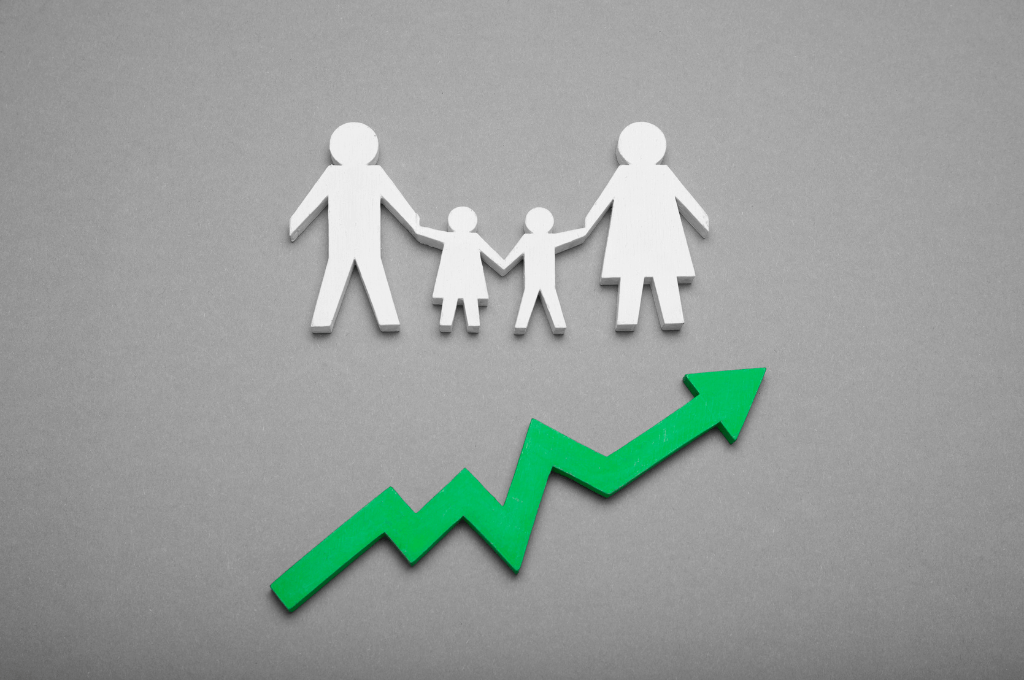In his address from the Red Fort on India’s 73rd Independence Day, Prime Minister Narendra Modi expressed deep concern about the country’s population explosion. He emphasized the increasing challenges this swelling population presents for the nation and the generations to come. This sentiment echoed in the halls of international discourse as the United Nations Population Fund (UNPF) State of World Population 2023 report revealed India’s impending leap over China to become the world’s most populated nation, boasting an impressive 1.43 billion people by mid-2023.
Discussing the implications of this demographic shift, Arun Singh, the Global Chief Economist of Dun & Bradstreet, suggests, “A growing population of this size entails additional job creation, infrastructure development, and provision of healthcare, education, and social security.” India’s burgeoning population, therefore, is a daunting challenge. However, mitigating its impact is achievable if the nation’s Gross Domestic Product (GDP) grows robustly on a sustained basis, leading to a consequent rise in per capita income.
According to an EY India report, the Indian economy is poised to skyrocket to a staggering $26 trillion by 2047, with per capita income expected to multiply sixfold to $15,000 (Rs 12.30 lakh) per annum. This economic trajectory implies that the GDP (numerator) must grow at a steady pace while the population growth (denominator) moderates. This balance is key for the nation to manage its resources optimally.
A comparison with other populous nations provides a valuable perspective. China, with its vast population, has experienced an average annual GDP growth of around 7% since the 1980s. Vietnam, another densely populated country, has seen a 6% growth rate since the 2000s. While Indonesia, Bangladesh, and the Philippines too demonstrate high growth rates, their populations are not nearly as colossal as India’s or China’s. India, growing at an average rate of over 5% since the 1990s, must amplify its economic performance to support its large and expanding population.
Singh expounds that to absorb the rising population into the workforce, India needs to grow at a real GDP rate of 10.8% till 2030, 6.5% till 2040, and 4.2% till 2047. He estimates the capital requirement to be a staggering $120 trillion in the next 25 years. Madan Sabnavis, Chief Economist of Bank of Baroda, underscores the immense responsibility this population growth places on the government and society. He points out several challenges, including the majority of India’s population remaining in lower income groups, rampant migration and overcrowding in urban areas, and the urgent need for social support in education and health services.
Also Read: Mapping India’s Startup Landscape: A Tour through the Top 10 Entrepreneurial Cities
Amid these issues, India’s belated efforts to bolster the share of manufacturing—a sector that has been stagnant at around 17-18%—will confront substantial challenges from Industry 4.0 and automation. Furthermore, the advent of AI-powered tools threatens to displace jobs, and the rising tide of anti-globalization could hinder the free flow of labor. Singh underlines the impending pressure on the labor market, stating, “In India, there will be 1.1 billion people who will be part of the working-age group of 15 to 64, by 2047… We have to create enough jobs.”
According to projections, India’s population growth is expected to peak around 2060. Another study published in the medical journal Lancet in October 2020 suggests that India is projected to host the world’s largest working-age population by 2100, followed by Nigeria, China, and the United States. These evolving demographics—marked by low fertility rates, increased lifespan, and enhanced health expectancy—necessitate the government to reassess their policy and spending priorities. Radhika Rao, Senior Economist at DBS Group Research, suggests that the government must prepare for a future characterized by lower consumer spending, a less robust workforce, and increasing healthcare needs.
Experts advise that improving human development indices should be a top priority. This involves action across the value chain—from ensuring better medical access from birth, guaranteeing sufficient nutrition, improving education, establishing social protection measures, and enhancing life expectancy. Rao further emphasizes the need for increased expenditure on education and health, stating, “The centre and states have to work together on this. We need to have a more equitable education system so that opportunities are similar for all. While this is challenging given the scale, it is necessary.”
Sabnavis offers another suggestion: empower municipalities to enhance rural and urban infrastructure. He argues that, theoretically, the private sector could effectively manage cities, similar to their successful management of airports. However, he acknowledges the constitutional constraints to this approach. Regardless, Sabnavis emphasizes the need to address the lack of accountability at these levels.
Singh caps the discussion by highlighting the dual nature of the challenge, saying, “It’s not just about the willingness; it’s also about the ability of public finances to put money into healthcare and social security issues.” As such, India’s journey as the world’s most populated nation will be a careful balancing act, demanding strategic planning, robust economic growth, and a collective responsibility towards its populace.
















